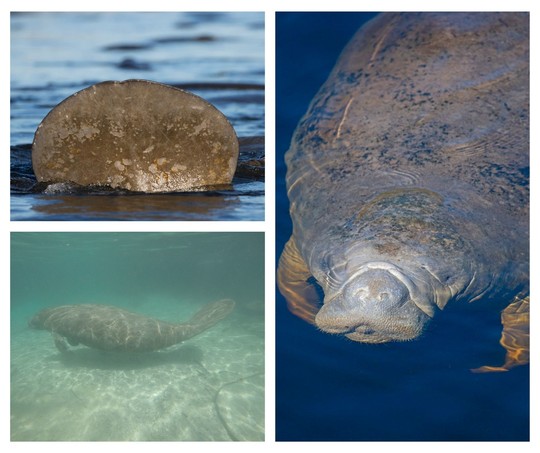 |
As spring brings warmer air and water temps across the state, manatees are naturally dispersing from their winter warm-water sites. The FWC and the US Fish and Wildlife Service Unified Command staff continue to provide lettuce to the remaining manatees at the Temporary Field Response Station. However, this will be the last week of the temporary feeding trial as manatees continue to disperse from wintering warm-water sites. Once the feeding trial is completed, daily monitoring will occur in the waters surrounding the Response Station and staff and partners will continue responding to manatees in need of assistance. While people may want to help manatees by attempting to feed them, please leave this to the experts. Feeding manatees is prohibited by state and federal law. However, emergency exemptions allow for authorized FWC and USFWS staff to provide food to manatees impacted by the Unusual Mortality Event. The short-term supplemental feeding trial is being done by experts in ways that prevent negative impacts to manatee behavior and habitat. Read the full weekly update on our website.
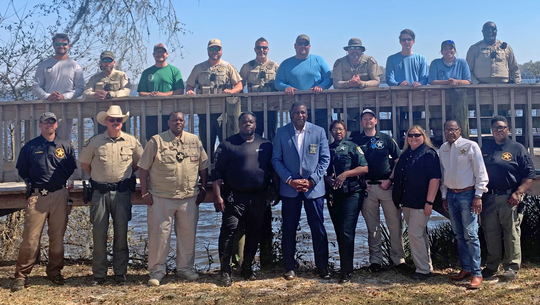
Lake Talquin Cleanup
Biologists from FWC’s Fisheries Research (FWRI), Freshwater Fisheries Management and Habitat and Species Conservation teamed up with FWC Law Enforcement and the Gadsden County Sheriff Office earlier this month for “Operation No Hook Left Behind” on Lake Talquin. This effort resulted in the removal of around 65 pounds of abandoned bush hooks, trot lines, and various pieces of debris. A total of 11 vessels and 25 people participated in the lakewide effort. Regulations for the use of bush hooks and trotlines in state waters can found on the regulations page of our website. Thank you to all who took part.
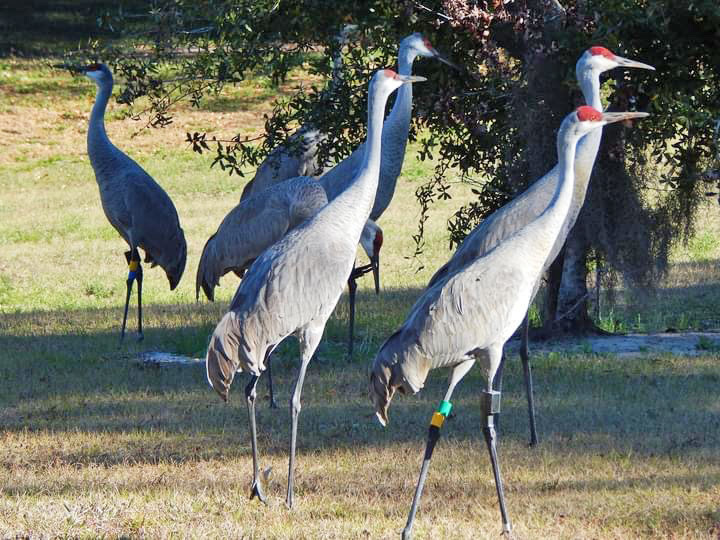
Sandhill Crane Study
Where do juvenile sandhill cranes go when they’re old enough to leave their parents? That’s what our avian biologists are finding out! #41704 is a young Florida sandhill crane that’s part of a tagging project to examine how sandhill cranes are using urbanized areas. This chick was radio banded in September 2021 with a GPS transmitter that sends our biologists 48 data points each day, showing them exactly where each tagged bird has travelled. From this, biologists can better understand where Florida sandhill cranes go once they leave the nest, their survivorship, productivity and habitat use in the urban landscape. #41704 is now on its own and doing well. The adolescent sandhill crane is still in the same general area where it was raised and is now hanging out with other youngsters! Watch the tagging #41704 and learn more about the Florida sandhill crane tagging project in this video.
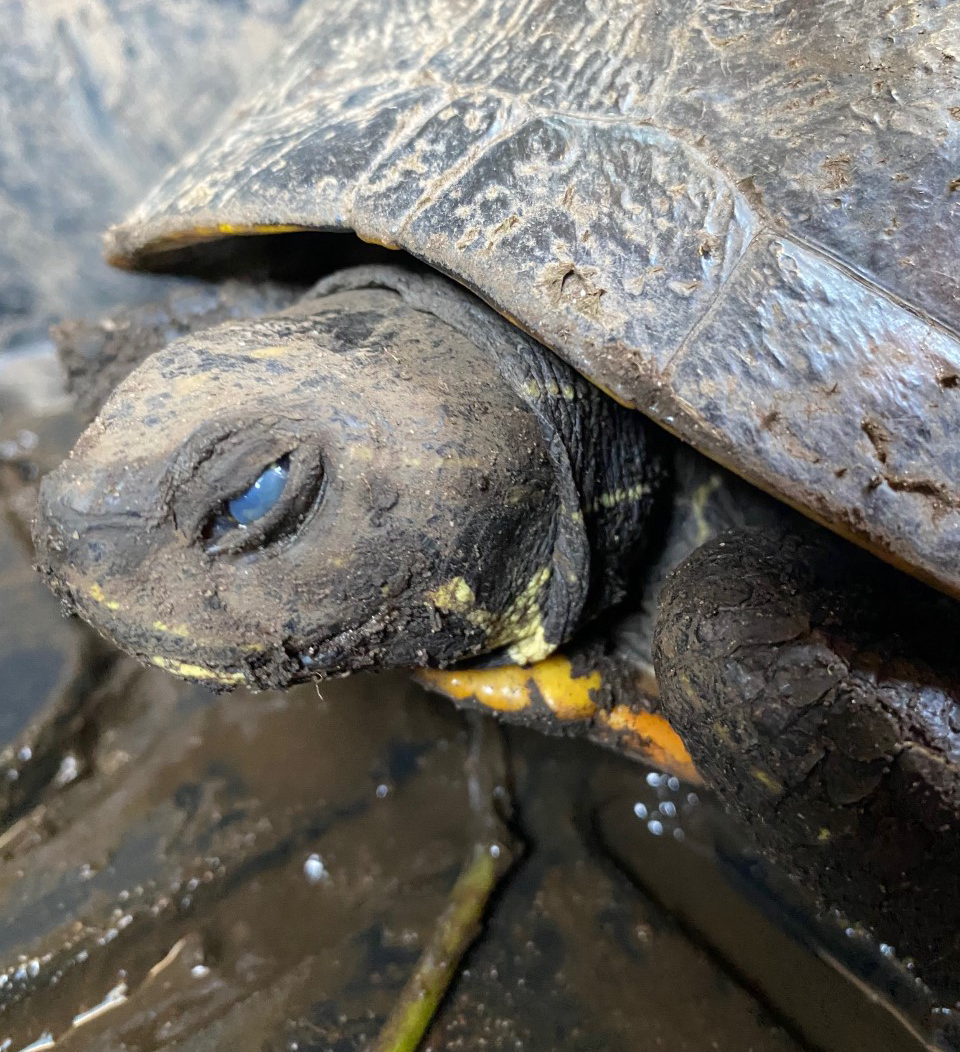
FWC Investigating Freshwater Turtle Virus
FWC is investigating a virus called Turtle fraservirus 1 (TFV1), previously referred to as Turtle bunyavirus (TBV), detected in multiple species of Florida’s native and nonnative freshwater turtles. To reduce the spread of TFV1 and lessen potential impacts of this virus, FWC enacted Executive Order #21-19 which prohibits the take and transportation of the following species: Florida softshell turtles (Apalone ferox), smooth softshell turtles (Apalone mutica), spiny softshell turtles (Apalone spinifera), and yellow-bellied sliders (Trachemys scripta scripta).Additionally, the virus is known to infect Florida’s cooter species (genus Pseudemys) and common snapping turtles (Chelydra serpentina), which are already prohibited from being removed from the wild, along with red-eared sliders (Trachemys scripta elegans), which are a conditional nonnative species. To help assess the geographic distribution of the virus, FWC is encouraging the public to reports of sick, dead and strangely acting freshwater turtles to FWC’s Freshwater Turtle Hotline: 352-339-8597, or via the FWC Reporter App. Contact FWC before handling sick or dead turtles. Here's what to look for.
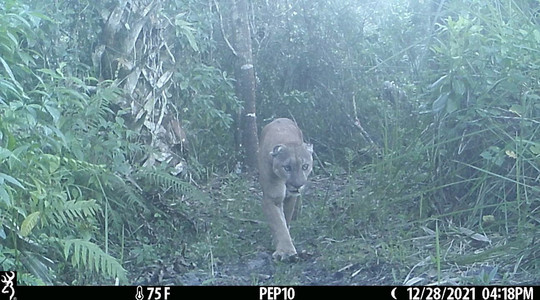
Panther Known as "No Ears" Radiocollared by Panther Research Team
Florida panther FP263 was first spotted on trail cameras in SW Florida around the Cypress Dome Trails at the CREW Wildlife and Environmental Area in 2018. He was dubbed “No Ears” by a citizen scientist due to the panther’s distinct tiny ears that are easy to identify on trail cameras. It’s speculated his mangled ears were likely caused by old injuries from fighting with other male panthers. FP263 was recently radiocollared by FWC’s panther research team. A full veterinary physical exam was performed including routine bloodwork and infectious disease screening. Biologists also collected body measurements along with hair and skin samples for genetic testing. Learning about an individual animal’s health is important not only for the well-being of that animal but also as part of an assessment of the health of the population. Estimated at around 8 years old and still ruling his territory, “No Ears” and his movements have been somewhat of a mystery to our researchers. Now wearing a radiocollar, biologists will learn more about his home range, habitat preferences and movement patterns.
 Avian Influenza Update
FWC continues to investigate the deaths of various bird species believed to be caused by Highly Pathogenic Avian Influenza (HPAI) “Bird Flu”. See our updated map and find answers to HPAI questions on our webpage. To prevent the spread of HPAI, the public should avoid handling sick or dead wildlife, prohibit the contact of domestic birds with wild birds, and report wild bird mortalities so die-offs can be investigated. There is a low risk of HPAI transmission to humans and, to date, there have been no known human infections in North America. The H5 2.3.4.4 strain has been documented in the US since 2021 and was detected in Florida in January 2022 from a hunter-harvested blue-winged teal. Please be advised that because HPAI is very contagious and not treatable in wild birds, some wildlife rehabbers may not be accepting these animals at this time.
New on MyFWC.com/Research
We hope you enjoy these articles that have been recently added/updated on our website: FWC continues to investigate the deaths of various bird species believed to be caused by Highly Pathogenic Avian Influenza (HPAI) “Bird Flu”. See our updated map and find answers to HPAI questions here
Harmful Algal Bloom Task Force Meeting Information
Red Tide Current Status
Manatee Mortality Event Along the East Coast:2020-2022
Avian Influenza
Seagrass Protection and Restoration in St. Joseph Bay
Turtle Fraservirus 1
Oyster Integrated Mapping and Monitoring Program (OIMMP)
2021 Statewide Sea Turtle Nesting Totals
New Publications
Stone Crab Catch Data
Our Mission
Through effective research and technical knowledge, we provide
timely information and guidance to protect, conserve, and manage
Florida's fish and wildlife resources.
|